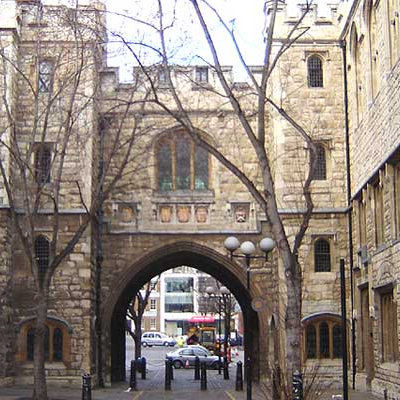
Like us on Facebook
PLACE NAMES


 
|
|
Clerkenwell
|

| |
Clerkenwell is an area of central London in the London Borough of Islington. It was an ancient parish and from 1900 to 1965 formed part of the Metropolitan Borough of Finsbury. The well after which it was named was rediscovered in 1924. The watchmaking and watch repairing trades were once of great importance.
In the 1850s the south-western part of Clerkenwell was known as London's "Little Italy" because around 2,000 Italians had settled in the area. The community had mostly dispersed by the 1960s, but the area remains the 'spiritual home' of London's Italians, and is a focal point for more recent Italian immigrants, largely because of St Peter's Italian Church. There are officially over 200,000 Italians in London, and possibly many more. The Italian Procession of Our Lady of Mount Carmel and Sagra takes place each July in the streets surrounding the church.
A small number of Italian businesses remain from the nineteenth century including organ builders Chiappa Ltd, and food outlets such as the delicatessen Terroni. Many other Italian firms survive from the period but have relocated elsewhere.
Clerkenwell took its name from the Clerks' Well in Farringdon Lane (clerken was the Middle English genitive plural of clerk, a variant of clerc, meaning literate person or clergyman). In the Middle Ages, the London Parish clerks performed annual mystery plays there, based on biblical themes. Part of the well remains visible, incorporated into a 1980s building called Well Court. It is visible through a window of that building on Farringdon Lane. Access to the well is managed by Islington Local History Centre and visits can be arranged by appointment.
In the 17th century South Clerkenwell became a fashionable place of residence. Oliver Cromwell owned a house on Clerkenwell Close, just off the Green. Several aristocrats had houses there, most notably the Duke of Northumberland, as did people such as Erasmus Smith. Before Clerkenwell became a built-up area, it had a reputation as a resort a short walk out of the city, where Londoners could disport themselves at its spas, of which there were several, based on natural chalybeate springs, tea gardens and theatres. The present day Sadler's Wells has survived as heir to this tradition, after being rebuilt many times and many changes of use including pleasure gardens, theatre, aquatic display venue, circus, music hall. Today it is a leading theatre and modern dance venue.
Clerkenwell Green lies at the centre of the old village, by the church, and has a mixture of housing, offices and pubs, dominated by the imposing former Middlesex Sessions House. It was built in 1782, extended during the Victorian era, and by the early 21st century used as a Masonic hall. The name is something of a historical relic - Clerkenwell Green has had no grass for over 300 years. However, in conveying some impression of its history, it gives the appearance of one of the better-preserved village centres in what is now central London. In Charles Dickens's Oliver Twist, Clerkenwell Green is where Fagin and the Artful Dodger induct Oliver into pickpocketing amongst shoppers in the busy market once held there. Indeed, Dickens knew the area well and was a customer of the Finsbury Savings Bank on Sekforde Street, which links Clerkenwell Green to St John Street.
|
 Feel free to Email me any additions or corrections Feel free to Email me any additions or corrections
LINKS AVAILABLE TO YOUR SITE
| |





